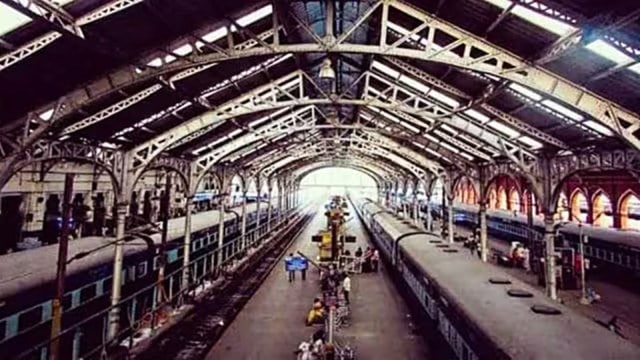Why Central Railways records more train disruptions in monsoon than Western line
Multiple factors including geographical and availability of infrastructure contribute to this.
 The Central line, being older, has a legacy of outdated infrastructure, making it more susceptible to disruptions. (File photo)
The Central line, being older, has a legacy of outdated infrastructure, making it more susceptible to disruptions. (File photo)After the Mumbai recorded unusually heavy rainfall on September 25, train services on the Central Railways (CR) line came to a grinding halt, leaving thousands of commuters stranded. However, the services on the Western Railways (WR) line were delayed but otherwise remained unaffected.
For decades, this has been a common pattern each monsoon with CR services suffering more than WR. Multiple factors including geographical and availability of infrastructure contribute to this.
Geographical challenge
One of the primary reasons for the frequent halts on CR during monsoons is its geographical positioning. Much of the Central line runs through low-lying areas prone to waterlogging. Sections like Sion, Kurla, and Vidyavihar are notorious for flooding during heavy rainfall.
When rainwater accumulates in these areas, it enters the railway tracks disrupting train services.
The Western line, however, is built on relatively higher ground, with fewer flood-prone areas along the route.
Another key factor is drainage system. Central Railway’s drainage systems, particularly in low-lying areas, have often been criticised as “inadequate” to handle heavy rain Mumbai receives during the monsoons. Even with ongoing efforts to improve drainage, the capacity to clear rainwater quickly remains limited. As water levels rise above the danger mark, trains have to be stopped to avoid accidents.
Central Railway spokesperson said, “We manage only 1 per cent of the drainage system, while 98 per cent falls under the BMC’s jurisdiction. We ensure that the drains within our control are kept clean, but it’s challenging to prevent water from flooding the tracks due to drains outside our control. The problem is worsened by reckless garbage dumping and encroachments.”
Meanwhile WR has invested significantly in improving its drainage infrastructure over the years. Reportedly, the stormwater drains along the Western line have been upgraded to handle more water, allowing train services to resume faster after heavy rains.
Ageing infrastructure
The Central line, being older, has a legacy of outdated infrastructure, making it more susceptible to disruptions. Reportedly, the tracks, signalling systems, and drainage are often in need of repair and upgrades.
WR, on the other hand, has had the advantage of receiving more consistent infrastructural upgrades. Over time, it has implemented better flood-mitigation techniques, including raising tracks in flood-prone areas and enhancing the efficiency of pumps that remove water from the tracks.
According to WR PRO Vineet Abhishek, it reduced monsoon-related disruptions this year due to its extensive preparedness over the past year.
“Our year-long preparation at multiple levels helped us tackle the usual issues faced during the monsoon season. By focusing pro-actively on improving rail infrastructure, particularly in low-lying areas, and incorporating advanced technology, we were able to minimise disruptions,” said Abhishek.
The WR has also introduced micro-tunnelling technology. “We installed small-diameter pipes under the tracks, which help drain logged water efficiently,” he explained. For areas more prone to flooding, larger diameter pipes were used.
CR has several infrastructure projects underway to address various issues, but it is a lengthy and ongoing process.
“The upgradation of the CR infrastructure cannot be seen as an independent problem. The entire infrastructure needs to be upgraded with unlimited improvements which is an extensive task. While we cannot alter the geographical terrain along the central line, we are continuously working to mitigate these challenges with each monsoon season,” added the CR spokesperson.












